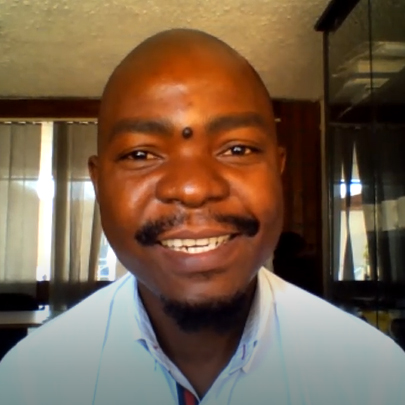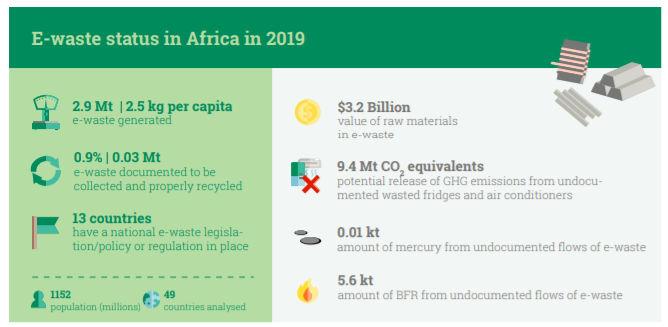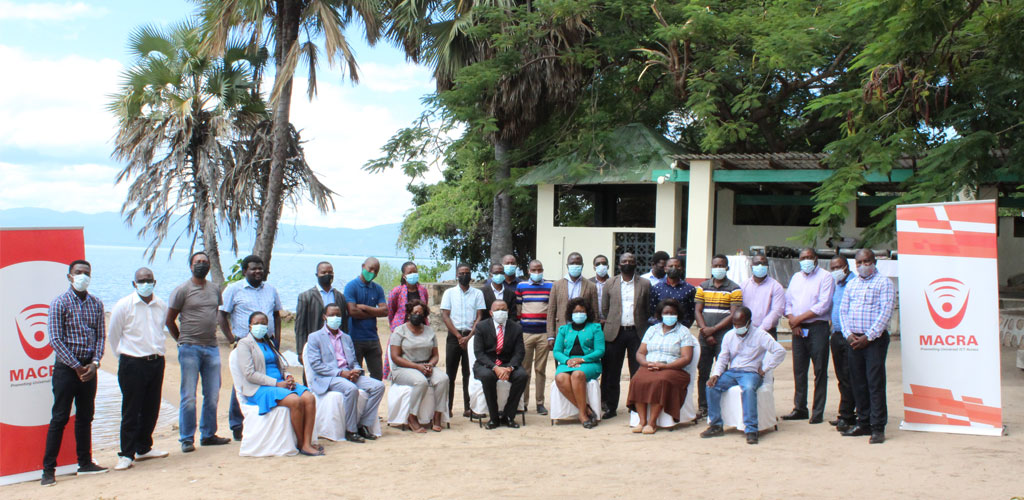Boniface Chimwaza on developing effective e-waste management in Malawi

Boniface Chimwaza
Principal Environment Officer, Environmental Affairs Department, Malawi
‘DANGER! HIGH VOLTAGE!’ read the warning labels on the discarded electronic equipment piled high and spilled across the floor of an office building in Lilongwe, Malawi’s capital city.
The old equipment was left there because it had nowhere else to go.
“Looking at the current generation of electric and electronic waste, I would say that we are heading for disaster if we don’t do anything,” says Boniface Chimwaza, Principal Environment Officer in Malawi’s Environmental Affairs Department. “We need to put strategies in place that help us to manage the e-waste when these devices come to their end of life.”
And that is exactly what Boniface is working to do to protect his local community from this potentially hazardous waste.
Urgent action required
Digital technology is transforming lives in Malawi.
But as its use expands, so too does the country’s e-waste output, growing from 7 kilotonnes in 2015 to 10 kilotonnes in 2019.
Waste electric and electronic equipment (WEEE or e-waste) contains toxins and hazardous materials that, if improperly managed, can pollute the environment and cause serious damage to people’s health.

This issue is not isolated to Malawi; global e-waste output is predicted to grow from a record 53.6 million metric tonnes (Mt) in 2019 to 74.7 million Mt by 2030. Yet only 17.4% of this waste was collected for recycling globally in 2019 – and just 1% in Africa.

And this has significant environmental, health and economic ramifications.
This discarded electronic equipment also contains valuable raw materials such as iron, copper and gold, which was estimated to be worth approximately USD 57 billion in 2019 but only USD 10 billion was recovered.
The time to act is now
That is why developing e-waste policies and regulations to establish good practices now is vital before it is too late, Boniface explains:
National e-waste legislation and regulation: developing effective policies
Although Malawi has a fairly robust waste management system, there is no specific national e-waste policy.
“I would like to see a Malawi that reuses and recycles most of its e-waste. I would like to see a Malawi that imports electronic and electric equipment that has a long shelf life so that we can extend the life cycle of this equipment once it is in the country and reduce the amount of e-waste we generate in a short period of time,” Boniface says.
“That is exactly why we are developing this new WEEE policy; it will guide the country in terms of what equipment we import and how we manage it once it enters the country, as well as managing what we manufacture ourselves.”
What is a national WEEE/e-waste policy?
A national e-waste policy is a document prepared by the government through consultation with stakeholders nationally and locally. An e-waste policy outlines the intention and the vision of the country to effectively manage e-waste often with a focus on the proposed roles and responsibilities of different actors along the electronics value chain. A policy as such is best prepared with a clear implementation action plan in order to ensure it is implemented in a timely manner.
And Malawi is in good hands: Boniface has a history of success in this field, having previously helped to improve the capital city’s waste management system using guidelines that he helped to develop, simultaneously creating 550 jobs in the process.
But managing Malawi’s growing e-waste challenge is not a one-person job.
Boniface is working with the government, as well as private businesses and organizations, to develop robust policies to manage the county’s e-waste output, such as take-back systems and an extended producer responsibility framework.

In 2020, the Malawi Communications Regulatory Authority (MACRA) requested assistance from ITU to develop a national waste electric and electronic management policy. To date, this assistance has included:
- Conducting a national waste electrical and electronic equipment assessment.
- The first Government Consultation Workshop on WEEE Policy Development which brought together national stakeholders from different ministries and public institutions that are involved in the WEEE value chain – an essential component for creating efficient and effective e-waste policies, and a key part of Boniface’s work – which was organized back-to-back with the WEEE Data and Statistics training.
- A private sector stakeholder consultation to gather inputs on the policy drafting from producers of electrical and electronic equipment in Malawi.
These consultations and trainings are ongoing, and are of key importance in the e-waste policy drafting process and subsequent implementation, as well as in the quantification and monitoring of e-waste at the national level.
Next steps for success
The next steps to help Malawi – and Boniface – tackle the increasing quantities of e-waste through effective regulation include:
- Finalising the drafting of the policy
- Stakeholder validation of the policy
- Policy approval
- Implementation of policy – and at the same time, preparation of a regulation which is enforceable
Once completed, Malawi will be the 14th country in Africa to have e-waste policies in place – helping to make the digitally connected future safe for everyone.
E-waste resources:
ITU-D Environment homepage
Global E-waste Monitor 2020
Global E-waste Monitor 2020 highlights
Report: Developing an e-waste national policy and regulatory framework for Malawi (PDF)
Read more about ITU’s WEEE Policy Support in Malawi here.


